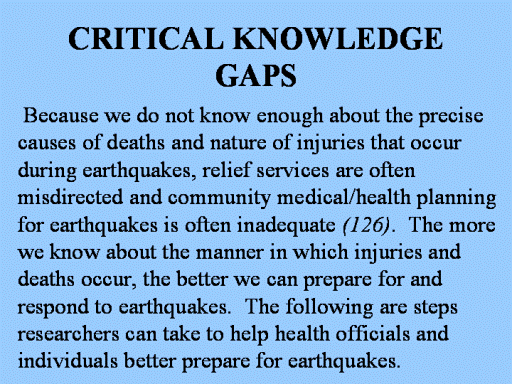| front |1 |2 |3 |4 |5 |6 |7 |8 |9 |10 |11 |12 |13 |14 |15 |16 |17 |18 |19 |20 |21 |22 |23 |24 |25 |26 |27 |28 |29 |30 |31 |32 |33 |34 |35 |36 |37 |38 |39 |40 |41 |42 |43 |44 |45 |46 |47 |48 |49 |50 |51 |52 |53 |54 |55 |56 |57 |58 |review |
 |
!
Classify the earthquake-related risks of populations around
the world by the construction class of buildings in which they live
and by the seismic intensity possible in the area.
Such classifications will help improve the accuracy of loss
prediction studies before disasters (127).
!
Determine the role of physical elements (e.g., type of
building, nonstructural elements) in producing specific types and
severities of earthquake-related injuries.
Currently, data on deaths and injuries and other related data
are usually gathered without being correlated with building design
information, the dynamic characteristics of soil around each
building, or the characteristics of the population at risk in
individual buildings.
Furthermore, few studies have looked at exactly what components of a
building cause the injuries, particularly in those situations in
which some people are killed and others are only injured or escape
without injury (79).
|